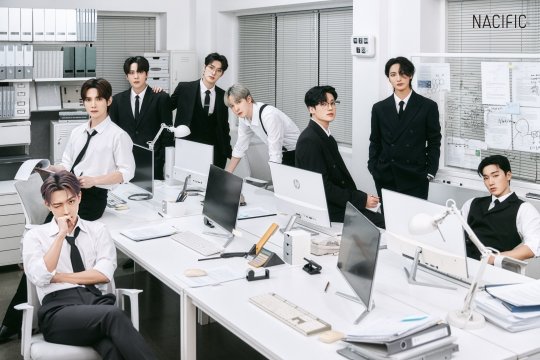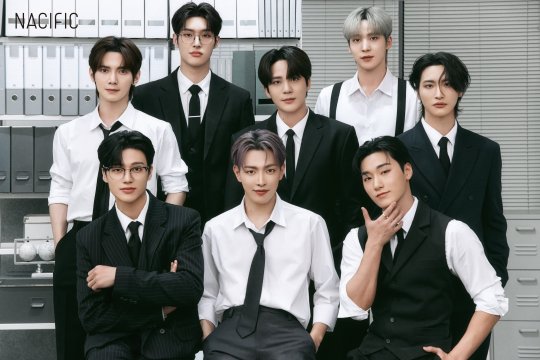#custom Product development firm
Explore tagged Tumblr posts
Text
Devsinc
Devsinc helps start-ups, SMEs and enterprises grow their business.
Help companies and organizations deliver innovative technology solutions to power their growth by unlocking access to passionate and experienced engineers and solution providers.
#Devsinc#custom Product development company#custom Product development firm#generative ai consulting Compnay#Web Development Agency
1 note
·
View note
Text
Innovating Healthcare: The Impact of Custom Healthcare Software Development Services in Product Engineering Firms
In today's fast-paced healthcare landscape, innovation is critical to delivering better patient care, improving efficiency, and staying competitive. Custom healthcare software development services have emerged as a critical component in the arsenal of product engineering firms. In this blog, we will explore the significance of custom healthcare software development, its role in product engineering firms, and how it is shaping the future of healthcare.
Custom Healthcare Software Development Services: Tailoring HealthTech Solutions
Custom healthcare software development services involve the creation of specialized software solutions designed to meet the unique needs of healthcare organizations. These solutions go beyond off-the-shelf software, offering tailored functionalities that can enhance patient care, streamline administrative processes, and support healthcare providers in delivering top-notch services.
The Role of Product Engineering Firms
Product engineering firms play a pivotal role in the healthcare industry by providing specialized custom healthcare software development services. These firms are dedicated to the design, development, and maintenance of healthcare software solutions, offering the following benefits:
Expertise: Product engineering firms have specialized teams with deep knowledge of healthcare regulations, industry standards, and emerging technologies. This expertise ensures that the developed software meets all compliance requirements and leverages the latest advancements.
Customization: Off-the-shelf healthcare software may only partially align with the unique requirements of every healthcare provider. Product engineering firms customize software to address specific challenges, making it a perfect fit for each client.
Scalability: Healthcare organizations can expand their operations without worrying about software limitations. Custom solutions are scalable and can accommodate growth, additional features, and increased patient data.
Integration: Custom healthcare software seamlessly integrates with existing systems, such as Electronic Health Records (EHR) systems, lab equipment, and billing systems. This integration streamlines data sharing and enhances interoperability.
Security: Security is paramount in healthcare. Product engineering firms prioritize robust security measures to protect sensitive patient data and maintain compliance with healthcare privacy regulations.
The Custom Healthcare Software Development Process
The development of custom healthcare software involves a systematic process:
Requirements Analysis: In the initial phase, the development team collaborates with healthcare providers to understand their specific needs, regulatory requirements, and goals.
Design and Architecture: Detailed software architecture and design plans are created, including user interfaces, data structures, and system architecture.
Development: Skilled developers build the software, adhering to best practices and quality standards. They ensure that the solution aligns with the healthcare provider's requirements.
Testing and Validation: Rigorous testing is conducted to identify and rectify any bugs or issues. Validation ensures that the software functions correctly within the healthcare environment.
Deployment and Integration: After successful testing, the custom healthcare software is deployed and seamlessly integrated with existing systems.
Training and Support: Healthcare staff receives training to wear effectively, and ongoing support is provided to address any issues or updates.
Future Trends in Custom Healthcare Software Development
As the healthcare industry continues to evolve, custom healthcare software development services are expected to play a vital role in shaping its future. Some key trends to watch out for include:
Telemedicine Solutions: Custom healthcare software will increasingly support telemedicine services, making remote healthcare consultations more accessible and efficient.
AI and Machine Learning Integration: These technologies will be integrated into healthcare software to provide predictive analytics, diagnostic assistance, and personalized treatment recommendations.
IoT in Healthcare: The Internet of Things (IoT) will enable the collection of real-time patient data, facilitating remote monitoring and enhancing patient care.
Blockchain for Data Security: Blockchain technology will be employed to ensure the security and privacy of patient records and data sharing.
Healthcare Mobile Apps: Custom mobile apps will become more prevalent, enabling patients to access their health information and communicate with healthcare providers conveniently.
In conclusion, custom healthcare software development services offered by product engineering firms are driving innovation in the healthcare industry. These services provide tailored solutions that improve patient care, streamline operations, and ensure compliance with industry regulations. As technology continues to advance, custom healthcare software development will remain at the forefront of healthcare transformation, playing a crucial role in the delivery of high-quality, patient-centric care.
0 notes
Text
Website : https://www.techgrowthadvisors.com/
Address : Old Jockey Cottage, Church Ln, Rainow, Macclesfield SK10 5XE
Phone : +44 0161 552 3979
TechGrowth Advisors is a leading technology marketing consultancy in the UK, specialising in strategic marketing consulting and revenue growth acceleration for tech-focused companies. Our 3-point strategic planning blueprint helps IT & telecoms companies drive breakthrough strategy and goal attainment. Our growth strategy services help to define your new growth trajectory and include marketing strategy development, brand development & management, product management, customer relationship management (CRM), customer experience journey mapping, Our operational services help you to lock in that growth and make it a consistent part of your processes and include lead generation & digital marketing, sales enablement, partner marketing systems & management and helping you to obtain vendor funding. We also provide analytics & insight services to help you to drive superior insights in your customers, competitors and markets. Contact us today to learn how we can help accelerate your IT company's growth.
Twitter : https://twitter.com/Techgrowthnow
LinkedIn : https://www.linkedin.com/company/93636405/
You Tube : https://www.youtube.com/@TechGrowthAdvisors
#Technology marketing consultancy UK#Strategic marketing planning for IT & telecoms firms#Tech-focused growth strategy#B2B technology marketing services#Marketing consultancy for IT & telecoms companies#tech-focused marketing#market leadership strategy for IT & telecoms#revenue growth acceleration#B2B marketing consulting#marketing analytics solutions#digital marketing campaigns#customer research and analysis#brand development and management#marketing technology consulting#product management solutions
1 note
·
View note
Text
Is Custom Web Application Development Right for Your Business?

#time is money#app development#web development#webdesigning#technology#People have grown accustomed to having all of their digital requirements answered promptly with the push of a button#resulting in a growth in the bespoke web application market in recent years. As a business owner#this requirement for quick gratification may appear ridiculous#but if you cannot give your clients what they want when they want it#it can reflect poorly on your ability and hence your firm. As a result#more and more businesses are turning to software programs to stay relevant in today's technological age.#Custom web applications aid in the organization of your business and the unification of operations. You will be able to operate with an inf#scaling up or down based on your needs at the time. Why should you choose custom web application development? If you want to stand out from#both by making a good first impression and by providing a high-quality product or service#you should consider custom web development.#Get a solution that is tailored to your company's objectives.#There are numerous web apps accessible to meet a variety of needs#but they are also designed to serve a diverse range of consumers. This frequently results in them having a more wide and more generic natur#the developers of such programs work hard to make them even more useful and to include popular features. Your company should not rely on ot#When you pick bespoke web application development#you will collaborate with professionals to create the solution that you require. You establish the expectations#and if something is unnecessary or missing#it is eliminated or added based on your request. In this manner#you get an app that aids your workflow rather than one that requires you to adjust to it.#Reap the benefit of continued assistance from skilled developers.#This second argument was originally mentioned in the first. Things get done when you need them to with custom web app development. Any main#and any potential concerns will be rectified as soon as possible. You will no longer need to rely on others to identify whether your tools#maintained#or updated. Furthermore#you will not outgrow the software because it will adapt to your business's growth. The developer will never decide to abandon the app
1 note
·
View note
Text
Very interesting + concise article, pertinent with how much I've seen the joke about that "sadness in his eyes you only see in east european gay porn". Warning for pretty much everything you can expect.
Describing the wave of Eastern European gay pornography that flooded the US market following the dissolution of the USSR, Jones said: “They were products of a crude imperialist enterprise: cheap and nasty looking, with an atmosphere of coercion and cultural misunderstanding pervading them. Customers adored these videos, and expressed their breathless admiration whenever given the chance”
It gets pretty rough from here onward.
The Fall… opens with a short clip of a young man in profile, undressing. He looks uncomfortable, alternating between staring forward and glancing in the direction of the camera, his eyes showing a mix of discomfort and contempt. Jones’ voiceover states: “even in an unlikely place, it is possible to find traces of recent history” followed by b-roll taken from the aforementioned porn films including maps of the former USSR, market scenes, beggars and street footage. Their purpose in the aforementioned films appears to be part exoticism and part poverty fetishism, attempting to show the former glory of the Eastern nations as an emphasis on their subsequent fall. They’re an essential part of the set-up, speaking directly to what made this genre of pornography appealing to a western, primarily American, market. It’s easy to comprehend the mixture of exploitation and exoticism that made these videos popular in the US, but Jones goes further, aiming to establish a firm link between the booming Western economy and a more global, less visible form of exploitation.
The latter half of the film compounds the atmosphere of coercion, focusing specifically on the casting and screen tests of performers. The voice from behind the camera probes the subject on their sexual preferences, their motivations for being filmed: “I’m doing it for the money” “That’s a very good reason” Western audiences were turned on by the idea that the performers were under some form of duress—the ostensibly straight man either consuming their sexuality through the guise of pornography, or in the case of several scenes, the performer showing visible discomfort at either the sex or the presence of the camera. The films are low budget, low production value and low brow—by intention, rather than necessity. Jones speculates that the developing Eastern European sex industry, with the influx of Western producers and a Western market in mind, could be seen as an indicator of fertile ground for fascist ideologies—an aspersion confirmed by the global rise of far-right ideologies in tandem with the economic pressure of late-stage capitalism, a point at which more contemporary comparisons can be made.
The brief conclusion on the contemporary form of this exploitation aesthetic is also noteworthy:
In the same way that the fall of communism was exploited by the West, the financial and social insecurity of a generation living in recession, under permanent austerity, is exploited now. The aesthetics utilised in Jones’ film are still broadly present, albeit perhaps in a slightly altered form, now accompanied by a new visual language born from a culture numb to being told to “like, comment, share and subscribe”.
656 notes
·
View notes
Text
African poverty is partly a consequence of energy poverty. In every other continent the vast majority of people have access to electricity. In Africa 600m people, 43% of the total, cannot readily light their homes or charge their phones. And those who nominally have grid electricity find it as reliable as a Scottish summer. More than three-quarters of African firms experience outages; two-fifths say electricity is the main constraint on their business.
If other sub-Saharan African countries had enjoyed power as reliable as South Africa’s from 1995 to 2007, then the continent’s rate of real GDP growth per person would have been two percentage points higher, more than doubling the actual rate, according to one academic paper. Since then South Africa has also had erratic electricity. So-called “load-shedding” is probably the main reason why the economy has shrunk in four of the past eight quarters.
Solar power is increasingly seen as the solution. Last year Africa installed a record amount of photovoltaic (PV) capacity (though this still made up just 1% of the total added worldwide), notes the African Solar Industry Association (AFSIA), a trade group. Globally most solar PV is built by utilities, but in Africa 65% of new capacity over the past two years has come from large firms contracting directly with developers. These deals are part of a decentralised revolution that could be of huge benefit to African economies.
Ground zero for the revolution is South Africa. Last year saw a record number of blackouts imposed by Eskom, the state-run utility, whose dysfunctional coal-fired power stations regularly break down or operate at far below capacity. Fortunately, as load-shedding was peaking, the costs of solar systems were plummeting.
Between 2019 and 2023 the cost of panels fell by 15%, having already declined by almost 90% in the 2010s. Meanwhile battery storage systems now cost about half as much as five years ago. Industrial users pay 20-40% less per unit when buying electricity from private project developers than on the cheapest Eskom tariff.
In the past two calendar years the amount of solar capacity in South Africa rose from 2.8GW to 7.8GW, notes AFSIA, excluding that installed on the roofs of suburban homes. All together South Africa’s solar capacity could now be almost a fifth of that of Eskom’s coal-fired power stations (albeit those still have a higher “capacity factor”, or ability to produce electricity around the clock). The growth of solar is a key reason why there has been less load-shedding in 2024...
Over the past decade the number of startups providing “distributed renewable energy” (DRE) has grown at a clip. Industry estimates suggest that more than 400m Africans get electricity from solar home systems and that more than ten times as many “mini-grids”, most of which use solar, were built in 2016-20 than in the preceding five years. In Kenya DRE firms employ more than six times as many people as the largest utility. In Nigeria they have created almost as many jobs as the oil and gas industry.
“The future is an extremely distributed system to an extent that people haven’t fully grasped,” argues Matthew Tilleard of CrossBoundary Group, a firm whose customers range from large businesses to hitherto unconnected consumers. “It’s going to happen here in Africa first and most consequentially.”
Ignite, which operates in nine African countries, has products that include a basic panel that powers three light bulbs and a phone charger, as well as solar-powered irrigation pumps, stoves and internet routers, and industrial systems. Customers use mobile money to “unlock” a pay-as-you-go meter.
Yariv Cohen, Ignite’s CEO, reckons that the typical $3 per month spent by consumers is less than what they previously paid for kerosene and at phone-charging kiosks. He describes how farmers are more productive because they do not have to get home before dark and children are getting better test scores because they study under bulbs. One family in Rwanda used to keep their two cows in their house because they feared rustlers might come in the dark; now the cattle snooze al fresco under an outside lamp and the family gets more sleep.
...That is one eye-catching aspect of Africa’s solar revolution. But most of the continent is undergoing a more subtle—and significant—experiment in decentralised, commercially driven solar power. It is a trend that could both transform African economies and offer lessons to the rest of the world."
-via The Economist, June 18, 2024. Paragraph breaks added.
#one of the biggest stories of this century is going to be the story of the African Renaissance#I promise you#well preferably they'll come up with a non-European term for it lol#but trust me it WILL happen and it will be SO good to see#africa#south africa#nigeria#kenya#solar#solar power#solar panels#solar pv#energy#clean energy#poverty#electrification#distributed energy#electricity#infrastructure#hope#solarpunk#good news#solar age#<- making that a tag now
411 notes
·
View notes
Text
Cuba broke through its colonial domination into freedom. From the mountains of the Sierra Maestra and from the cities came the torrential power of the people against the US-backed dictator Fulgencio Batista. ‘The revolution is made in the midst of danger’, said Fidel Castro as he led his band of peasant-soldiers from the hills into the cities. They had triumphed against remarkable odds. Quickly, the revolutionaries passed a series of decrees – just as the Soviets had – to draw the key classes to their side. To draw in the urban Cubans, the revolutionaries cut rents by half – sending a strong signal to the bourgeoisie that they had a different class outlook. Then, the revolutionaries took on the United States, whose government held a monopoly over services to the island. Telephone and electrical companies – all American – were told to reduce their rates immediately. Then, on May 17, 1959, the Cuban government passed its agrarian reform – the keystone of the revolutionary process. Land holdings would be restricted so that no large landowners could dominate the landscape and so that the US sugar industry could not strangle the hopes of the island. The most radical part of the reform was not the land ceiling itself, but the logic that agrarian reform would transform the stagnation of the Cuban economy and its dependence upon the United States. The law clearly stated that, from a socialist standpoint,
«The agrarian reform has two principal objectives: (a) to facilitate the planting or the extension of new crops with the view of furnishing raw materials to industry, satisfying the food requirements of the nation, increasing the export of agricultural products and, reciprocally, the import of foreign products which are essential to use; (b) to develop the interior market (family, domestic) by raising the purchasing power of the rural population. In other words, increase the national demand in order to develop the industries atrophied by an overly restrained consumption, or in order to create those which, for lack of customers, were never able to get started among us.»
The revolutionaries wanted to diversify their sugarcane island, produce food security for their people, remove people from desperation, increase the ability of people to consume a range of goods and engineer a people-centred rather than an export-centred economy. Long before Castro announced his commitment to communism, the regime had already developed a carefully thought out socialist platform.
The United States of America, having overthrown the radical nationalist government in Guatemala in 1954, was eager to repeat the task in Cuba in 1959. An embargo came swiftly, as did every form of humiliation possible against the Cuban people. The Cuban economy was structured around dependency to Washington, with the sugar bought by the US firms and with the island turned into a playground for American tourists. Now, the US decided to squeeze this little island, only ninety miles from the US shoreline. Gunboats were readied, a failed invasion tried in April 1961 at the Bay of Pigs. Cuba was vulnerable but also protected by the deep roots of its revolution. But would this protection be sufficient? Could Cuba, alone, be able to survive the onslaught from the United States?
On February 5, 1960, a leader in the USSR and an Old Bolshevik – Anastas Mikoyan – came to Havana to join Fidel Castro at the opening of a Soviet scientific, cultural and technical exhibition. A week later, Mikoyan and Castro signed an agreement for the USSR to buy Cuban sugar at the world market price (in dollars) and provide credits for the Cubans to buy Russian goods. The USSR would subsequently buy almost all the Cuban sugar harvest, even as the Russian consumer market could very well have been supplied by beet sugar from within the USSR. Prices fluctuated, but, on balance, the Cubans were able to find a regular buyer to take over from the United States. The Russians also provided over a $100 million in credits toward the construction of Cuba’s chemical industry as well as trained Cuban technical and scientific workers in the USSR. Diversification of Cuba’s economy remained on the cards, although it became clear that it would not be an easy task. In August 1963, Castro announced that diversification, as well as industrialization, would be postponed. Cuba needed to concentrate on its sugarcane harvest to earn the means to survive the embargo.
On February 24, 1965, Che Guevara addressed the Second Economic Seminar of Afro-Asian Solidarity in Algiers, Algeria. He had come to talk about the economic problems for a revolution in a post-colonial country. Overthrowing the former colonizer was not enough, Che said, since ‘a real break’ is needed from imperialism for the new state to actually flourish and not remain in dependency. How could the post-colonial state survive a hostile economic climate? Who would buy its goods – mainly primary, unprocessed goods – at a fair price, and who would lend it capital at fair terms to develop? Capitalist banks and countries would not provide the post-colonial state, particularly a socialist state, with the means to break out of the trap of underdevelopment. Banks would lend money to a post-colonial state at rates higher than it would lend to a colonial power. Expensive money would only put the post-colonial state into further difficulty, as it would find it hard to service its debt and see its debt multiply out of hand. To prevent this situation, Che argued, the ‘socialist countries must help pay for the development of countries now starting out on the road to liberation’. Trade between socialist countries must not take place based on the law of value of capitalism, but through the creation of fraternal prices. ‘The real task’, Che said, ‘consists of setting prices that will permit development. A great shift in ideas will be involved in changing the order of international relations. Foreign trade should not determine policy, but should, on the contrary, be subordinated to a fraternal policy toward the peoples.’
China, in 1960, offered Cuba credit of $60 million without interest and without a timeline for repayment. This was an enviable loan. But the scale was much smaller than the Soviet assistance. By 1964, the USSR had provided Cuba with economic assistance valued at over $600 million, while the Eastern European countries offered several hundred million more in aid and assistance. The USSR had also trained over 3,000 Cubans in agronomy and agricultural mechanization as well as 900 Cubans as engineers and technicians. Che recognized the value of the Soviet ‘fraternal policy’ both in terms of the training and in the prices offered. ‘Clearly, we could not ask the Socialist world to buy this quantity of sugar at this price based on economic motives’, he had said in 1961, ‘because really there is no reason in world commerce for this purchase and it was simply a political gesture’.
Red Star Over the Third World, Vijay Prashad, 2019
93 notes
·
View notes
Text
The Daily Mail has helpfully listed all the times Meghan’s rebrands and relaunches have failed.
Archived Link
Here, FEMAIL reveals the Duke and Duchess' projects that, for all the carefully constructed razzmatazz of their launch, have so far come to little.
ARO/Roop:
[L]ittle more has been officially revealed about the brand, with no Instagram posts on the firm's official account since March and the website simply offering fans the chance to join a waitlist. But what exactly are potential customers waiting for? Jam and dog biscuits? A source told The Daily Mail in June that the priority is instead the launch of a rosé wine. It's unclear when exactly American Riviera Orchard products will be available.
Archetypes:
The Duchess, who produced only one series of her podcast Archetypes for Spotify before parting ways with the company, had signed with Lemonada to develop and host a new series. However, a source told Eden that there is not expected to be any work broadcast this year. 'The relaunch of Meghan's Archetypes podcast got pushed back to 2025,' the California-based source says….Lemonada is said to be concerned that there would also be 'scheduling conflicts' between the launch of its podcasts and that of Meghan's lifestyle brand, American Riviera Orchard.
40x40:
It was unclear at the time as to exactly how the project would work, or whether there would be any way to measure its success. But according to The Sun, less than 10 months on, there was no follow-up on the campaign and royal expert Angela Levin said she thought the 40x40 project had been 'cancelled'. She said: 'I think it's very quietly gone into the dustbin,' added that it was an idea of the royal's that 'didn't come off'. There also doesn't seem to be any mention of the 40x40 project on the Duke and Duchess' Archewell website.
Spotify:
Last January, [Bill Simmons, Spotify’s head head of podcast innovation and monetization] blasted Prince Harry, saying it was 'embarrassing' to be affiliated with the same company. 'Shoot this guy to the sun,' he said, according to sports website The Big Lead. 'I'm so tired of this guy. What does he bring to the table? He just whines about s*** and keeps giving interviews. Who gives a s***? Who cares about your life? You weren't even the favourite son. You live in f****** Montecito and you just sell documentaries and podcasts and nobody cares what you have to say about anything unless you talk about the royal family and you just complain about them.'
The couple produced less than 13 hours of content during the three-year partnership: 12 episodes of Meghan's Archetypes show, and a 30-minute Christmas special featuring both the Duke and Duchess.
Pearl/Netflix:
Harry and Meghan signed a five-year agreement with Netflix* in 2020 worth an estimated $100million (£80million) but earlier this year there was speculation that their contract renewal was under threat.
The couple's first launch on the streaming giant was their six-part documentary 'Harry and Meghan' which was released in 2022 and caused controversy with its series of swipes at the Royal Family. … But in May, Netflix dropped Meghan's planned animated series Pearl as part of a wave of cutbacks prompted by the streaming service's drop in subscribers. All references to her doomed animation were wiped from her Archewell website after the series was axed by the streaming giant. A prior description of the series under the Archewell Productions subsection was nowhere to be found after it was cancelled.
*There’s been a lot of speculation over the years about their Netflix deal, but this is the first official confirmation in writing (that I’ve been able to find) that it’s a 5-year deal. This supports my theory that the new push for content (Meghan’s lifestyle show, her cooking show, and Harry’s polo documentary) is a final “do or die” effort to be able to renegotiate their contract and renew their deal.
63 notes
·
View notes
Text
Okay. First post trying to use gifs properly. I've switched out improper gifs for these type for my last 3-4 posts. Gonna work on some more corrections tomorrow when I have time. Please let me know if I'm misstepping anywhere. Thanks for your patience! That said...
LET'S TALK ABOUT SYLVIE💕, INTERSECTIONAL FEMINISM (SYLVIE & LOKI)✊🏽, AND QUEER REPRESENTATION (LOKIUS)🏳️🌈🏳️⚧️!
SYLVIE
I'm rooting for Lokius, AND I also love how much Sylvie has forged a life for herself in S2. A lot of her development is implied, so I think it's worth looking at her growth outside the context of Loki himself: She found a job, locals know her by name, she has friends and acquaintances, she has hobbies!
People call her by name in her timeline on 4 occasions:
1. When the McDonald's shift manager (John) checks in on her after work. See the kid with the tie in the image below. I couldn't find any gifs of him visiting Sylvie at her truck. She asked him if his mom was gonna pick him up to make sure he was gonna be okay late at night. 🥹

2. When a customer picks up their McDonald's order and thanks her (cheerfully). Also note how many employee stars she had on her badge! Queen.

3. Lyle at the record store. They seem like really good friends, and I got the "beginnings of an attraction" vibe between the two of them. Unfortunately, the gifs below are the only ones I could find of him and I'm still searching for the source. His interaction with Sylvie before spaghetti-trauma was so sincere. He could tell she was down and offered her Velvet Underground. Come on, that's a solid move.


4. Eric at the bar, who comments 2 shots of bourbon is a good choice. Let me tell you, finding a gif of Eric was like finding a needle in a haystack, but here he is leaning close to Sylvie. Thank you, @zehiiro!

I tried to find more gifs of all the people Sylvie has in her life but couldn't find any, which is a darn shame because there are so many subtle cues she's built a support system on her own and she's thriving.
She's a regular at many places in her timeline, and when people greet her, they do so with a smile. She loves music, a hard drink, and punk fashion.
When she engages with Loki, she may come across as cold, but I honestly think she's being firm with her boundaries and true to her beliefs. The TVA threatened her life for centuries. I don't doubt setting foot in the building is traumatic for her, which may explain why she was more harsh than usually in S2E4. Her psychological defenses were all on overdrive. Yet when Sylvie's in her own timeline, far away from the TVA, she can be her real self. Turns out, her real self is pretty well-liked! (I'll talk about how this is mirrored in Loki soon).
INTERSECTIONAL FEMINISM
Sylvie's an unapologetically "selfish" woman who knows what she wants, wants it on her own, is doing it on her own, and isn't afraid to put her foot down when it comes to her personal boundaries. We should be applauding all of that!
This is exactly the kind of female representation we need, but the show did Sylvie a disservice in S1 by coming at her character as a love interest first (look at all the media promos classifying her as such) instead of more thoughtfully showing how badly she has been affected by the TVA and planting what her desires are throughout. If they had done this with more intention and finesse, her position in S2 wouldn't come off as completely irresponsible.
As a result of this apparent marketing and pre-production development decision, her perception as a character (by both lokius and sylki shippers) is muddled by the question of her relationship status with Loki. This truly isn't fair, most especially to Sophia Di Martino.
Of course, Sylvie isn't perfect. No well-written character should be. I just think she's cooler than she gets credit for precisely because her character arc doesn't require the fulfillment of a romance. She will be fine whether or not she ends up with Loki. It's very feminist!
Loki, in turn, found safety, belonging, and love at the TVA. All the things that are the complete opposite of Sylvie's lived experience. I often see fans complaining about how Loki is ooc in his own series.

The thing is, and Loki admits this himself: it's all part of an illusion.
This illusion started far before the first Thor movie. He comes from a hyper-masculine (dare I say toxic-masculine) warrior society. His true nature doesn't conform with this, so he has to overcompensate with some (genuinely awesome) bad assery.
BUT he doesn't like it.
As a comparison to a far lesser but more relatable degree: imagine putting on a customer service persona 24/7. UGH. It's just not sustainable without becoming increasingly angry and bitter, which is what Sacred Timeline Loki becomes. Mobius gets ahead of this.
In the series, Loki can finally TURN OFF that persona, and TURN IT ON again when it's needed (and fun!).

He also now has the freedom to be silly, expressive, and magical (unapologetically queer!) without anyone making fun of him for it.

The end result is a much calmer, happier, likable person (like Sylvie in her timeline, his defenses are no longer on overdrive!). Who shows him this is possible?
Here's the receipt:

QUEER REPRESENTATION
Sociopoliticaly, Loki and Mobius come from a different angle. A lot of men (cis, fluid, trans, or otherwise) struggle with the social expectation of burying feelings and never ever showing vulnerability, especially to another men. Now, some might argue that shipping men together perpetuates this construct. There's some truth to this, but only through the lens that it is shameful to be gay. In order to get to a point in society where there's no shame in being mistaken as gay (or queer, generally) when being affectionate with another man, there must be continuous positive representation of homosexual relationships in which the characters are not stereotypes. Loki and Mobius are exactly this, especially Mobius.
Whereas Loki, on Asgard, represents the openly queer oppressed (i.e. magic and cunning, qualities historically tied to witches or "immoral women" instead of brute strength), Mobius can represent the closeted repressed.
In S1, Mobius was much more uptight, rule-abiding, and just shy of holier-than-thou. The power structure in which he existed perpetuated this, until Loki reveals to him it was all a lie (an illusion).
In S2, he becomes more flexible, more fun-loving, and more expressive in his affection. In S1, most of his support of Loki manifested as words of affirmation. In S2, his support extended to physical touch and bonding. Mobius, if seen through the lens of a closeted man allegory, finds the courage (and partner) to slowly come out.

139 notes
·
View notes
Text
Growth Strategies Adopted by Major Players in Turf Protection Market
In the dynamic landscape of the turf protection industry, key players like Syngenta Crop Protection AG (Switzerland), UPL Limited (India), Corteva Agriscience (US), Nufarm (US), Bayer AG (Germany), and BASF SE (Germany) are at the forefront of innovation and market expansion. These industry leaders are driving growth through strategic initiatives such as partnerships, acquisitions, and cutting-edge product developments, solidifying their positions as influential forces in shaping the future of the turf protection industry. Their efforts not only enhance their global presence but also set new benchmarks for industry standards and customer expectations. The global turf protection market size is estimated to reach $8.1 billion by 2028, growing at a 4.9% compound annual growth rate (CAGR). The market size was valued $6.4 billion in 2023.
Top Global Turf Protection Leaders to Watch in 2024
· Syngenta Crop Protection AG (Switzerland)
· UPL Limited (India)
· Corteva Agriscience (US)
· Nufarm (US)
· Bayer AG (Germany)
· BASF SE (Germany)
· SDS Biotech K.K. (Japan)
· AMVAC Chemical Corporation (US)
· Bioceres Crop Solutions (Argentina)
· Colin Campbell (Chemicals) Pty Ltd (Australia)
· ICL Group Ltd. (US)
Investments and Innovations: Key Strategies of Top Turf Protection Companies
🌱 Syngenta Crop Protection AG: Leading the Way in Integrated Pest Management
Syngenta Crop Protection AG, a global agribusiness based in Switzerland, operates prominently in the crop protection and seeds markets. The company offers a comprehensive range of herbicides, insecticides, fungicides, and seed treatments, helping growers worldwide enhance agricultural productivity and food quality. With a presence in over 90 countries, Syngenta’s reach is truly global. In October 2020, Syngenta further strengthened its position by acquiring Valagro, a leading biologicals company. Valagro’s strong presence in Europe, North America, Asia, and Latin America complements Syngenta’s existing crop protection chemicals. This acquisition allows Syngenta to offer more integrated pest management strategies that reduce reliance on synthetic chemicals, while Valagro’s expertise in plant nutrition promotes healthier turfgrass growth and improved soil health.
Know about the assumptions considered for the study
🌍 UPL Limited: Innovating Turf Management Solutions Globally
UPL Limited, formerly known as United Phosphorus Limited, is a global agrochemical company based in India, providing a wide range of agricultural solutions, including crop protection products, seeds, and post-harvest solutions. UPL is a key player in turf management, offering innovative solutions for golf courses, sports fields, and other turf areas. Their product portfolio includes herbicides, fungicides, insecticides, and plant growth regulators, all designed to enhance turf quality and health while effectively controlling pests and diseases. Operating in over 130 countries across North America, South America, Europe, and Asia Pacific, UPL has 28 manufacturing sites worldwide, solidifying its position as a leader in the global turf protection market.
🏆 Bayer AG: Streamlining for a Focused Future in Turf Protection
Bayer AG, a multinational pharmaceutical and life sciences company headquartered in Leverkusen, Germany, operates across three business segments: Pharmaceuticals, Consumer Health, and Crop Science. The company’s Crop Science division caters to the turf protection market, offering products such as herbicides, insecticides, and fungicides. With operations in over 90 countries, including regions like North America, South America, Europe, the Middle East, Africa, and Asia Pacific, Bayer maintains a strong global presence. In March 2022, Bayer sold its Environmental Science Professional business, which includes turf protection products, to private equity firm Cinven for USD 2.6 billion. This strategic divestment is part of Bayer’s ongoing efforts to streamline its portfolio and concentrate on core businesses, ensuring a more focused approach to its future operations.
16 notes
·
View notes
Text
One of the biggest hacks of the year may have started to unfold. Late on Friday, embattled events business Live Nation, which owns Ticketmaster, confirmed it suffered a data breach after criminal hackers claimed to be selling half a billion customer records online. Banking firm Santander also confirmed it had suffered a data breach impacting millions of customers and staff after its data was advertised by the same group of hackers.
While the specific circumstances of the breaches—including exactly what information was stolen and how it was accessed—remain unclear, the incidents may be linked to attacks against company accounts with cloud hosting provider Snowflake. The US-based cloud firm has thousands of customers, including Adobe, Canva, and Mastercard, which can store and analyze vast amounts of data in its systems.
Security experts say that as more details become clear about hackers' attempts to access and take data from Snowflake’s systems, it is possible that other companies will reveal they had data stolen. At present, though, the developing situation is messy and complicated.
“Snowflake recently observed and is investigating an increase in cyber threat activity targeting some of our customers’ accounts,” wrote Brad Jones, Snowflake’s chief information security officer in a blog post acknowledging the cybersecurity incident on Friday. Snowflake has found a “limited number” of customer accounts that have been targeted by hackers who obtained their login credentials to the company’s systems, Jones wrote. Snowflake also found one former staff member’s “demo” account that had been accessed.
However, Snowflake doesn’t “believe” it was the source of any leaked customer credentials, the post says. “We have no evidence suggesting this activity was caused by any vulnerability, misconfiguration, or breach of Snowflake’s product,” Jones wrote in the blog post.
While the number of Snowflake accounts accessed and what data may have been taken have not been released, government officials are warning about the impact of the attack. Australia’s Cyber Security Center issued a “high” alert on Saturday, saying it is “aware of successful compromises of several companies utilizing Snowflake environments” and companies using Snowflake should reset their account credentials, turn on multifactor authentication, and review user activity.
“It looks like Snowflake has had some rather egregiously bad security compromise,” security researcher Troy Hunt, who runs data breach notification website Have I Been Pwned, tells WIRED. “It being a provider to many other different parties, it has sort of bubbled up to different data breaches in different locations.”
Details of the data breaches started to emerge on May 27. A newly registered account on cybercrime forum Exploit posted an advertisement where they claimed to be selling 1.3 TB of Ticketmaster data, including more than 560 million people’s information. The hacker claimed to have names, addresses, email addresses, phone numbers, some credit card details, ticket sales, order details, and more. They asked for $500,000 for the database.
One day later, the established hacking group ShinyHunters—which first emerged in 2020 with a data-stealing rampage, before selling 70 million AT&T records in 2021—posted the exact same Ticketmaster ad on rival marketplace BreachForums. At the time, Ticketmaster and its parent company Live Nation had not confirmed any data theft and it was unclear if either post selling the data was legitimate.
On May 30, ShinyHunters also claimed to be selling 30 million customer details and staff information from Santander, putting a $2 million price tag on the information. Both posts on BreachForums have drawn attention to the illegal marketplace, which was recently revived by ShinyHunters after the FBI took the website down on May 15. The posts may, at least in part, be efforts to restore the disrupted forum’s damaged reputation with criminals.
The two hacks were linked to Snowflake’s systems by Israeli security firm Hudson Rock, which, in a now-removed blog post, posted conversations its researchers had with the alleged hacker who claimed to have accessed Snowflake’s systems and exfiltrated data. The hacker claimed they had tried to sell the data back to Snowflake for $20 million. (Hudson Rock did not respond to WIRED’s questions about why it has removed its research).
The Hudson Rock post claimed that a Snowflake employee may have been infected by an infostealer that collected the details the hacker needed to log in to its systems. Charles Carmakal, the chief technology officer at Google-owned security firm Mandiant, told BleepingComputer that its investigations, which have been taking place in recent weeks, indicate information-stealing malware may have been used to get Snowflake account credentials.
A Ticketmaster spokesperson told TechCrunch that its stolen database was hosted on Snowflake after the company acknowledged a data breach in a filing to the Securities and Exchange Commission on Friday evening. In the middle of May, before its data was advertised online, Santander first said it had seen unauthorized access to one of its databases “hosted by a third-party provider,” however it has refused to name the third party.
Snowflake’s CISO, Jones, acknowledged the security incident on Friday, saying that if a “threat actor obtains customer credentials, they may be able to access the account.” The company says it became aware of the suspicious activity on May 23 but has since found out it had been happening since mid-April. Jones’ post says Snowflake has notified all of its customers and “encouraged” them to review account settings and ensure they have implemented multi-factor authentication. In an additional security bulletin, Snowflake says it has seen “malicious traffic” from a client calling itself “rapeflake” and also connections from another client called “DBeaver_DBeaverUltimate.” A company spokesperson tells WIRED they have “nothing else to add” beyond the information included in company posts.
Cloud security company Mitiga says its investigations have seen a threat actor targeting organizations using Snowflake databases and using an attack tool called “rapeflake” in the process. Roei Sherman, field CTO at Mitiga, tells WIRED one possible scenario is that a threat actor managed to get information about Snowflake’s systems and then stole information about its clients, possibly using automated tools and brute-forcing their way into accounts.
Sherman says little is known about what data was stolen at the moment or the “rapeflake” tool, but that the attack could have wider ramifications going forward. There are already early signs other companies may be impacted.
Sherman says some of Mitiga’s customers have reached out to it for help, while Mandiant told BleepingComputer it had been assisting Snowflake customers in recent weeks. Cybersecurity researcher Kevin Beaumont shared online that he knows of six companies that have been impacted. And Australian events company Ticketek has also revealed customer names and email addresses stored in a “cloud-based platform, hosted by a reputable, global third-party supplier” have been accessed, although a spokesperson refused to confirm if this was related to Snowflake at all.
“We haven’t seen the entire blast radius yet,” Sherman says. “Snowflake has thousands of clients—they offer self-registration—and some of their clients are huge companies. We expect to learn about additional companies compromised.”
18 notes
·
View notes
Text
China’s exports rose year-on-year by 10.3% in RMB, driven by 20% to 40% jumps in exports to India, Brazil, Indonesia, Vietnam, South Africa and other countries of the Global South. This more than compensated for sharp declines in shipments to developed markets including the US (-7%), the European Union (-6.8%), and Japan (-2.5%).
The biggest gains were registered in BRICS members India (+16%), Brazil (+37.1%), and South Africa (14.8%), as well as Vietnam (+28.4%) and Indonesia (+22.2%).
China’s exports to the Global South surpassed exports to all developed markets during late 2022 and 2023[...]

The Chinese shipped semi-finished goods and components to third countries for final assembly and re-export to the United States. As the BIS wrote:
>Firms from other jurisdictions have interposed themselves in the supply chains from China to the United States. The identity of the firms that have interposed themselves in this way can be gleaned from the fact that firms from the Asia-Pacific region account for a greater portion of suppliers to US customers than in December 2021, as well as accounting for a greater portion of the customers of Chinese suppliers.
The World Bank economists put it this way:
>US imports from China are being replaced with imports from large developing countries with revealed comparative advantage in a product. Countries replacing China tend to be deeply integrated into China’s supply chains and are experiencing faster import growth from China, especially in strategic industries. Put differently, to displace China on the export side, countries must embrace China’s supply chains.
12 Mar 24
47 notes
·
View notes
Text



𝙉𝘼𝘾𝙄𝙁𝙄𝘾 𝙓 𝘼𝙏𝙀𝙀𝙕 𝐖𝐞𝐥𝐜𝐨𝐦𝐞 𝐭𝐨 𝐍𝐀𝐂𝐈𝐅𝐈𝐂 𝐎𝐅𝐅𝐈𝐂𝐄 ! Domestic Sales Team │ Wooyoung Jeong, Associate Achieved first place in company-wide sales in the shortest period of time! An all-rounder who captivates customers with a bright smile

𝙉𝘼𝘾𝙄𝙁𝙄𝘾 𝙓 𝘼𝙏𝙀𝙀𝙕 𝐖𝐞𝐥𝐜𝐨𝐦𝐞 𝐭𝐨 𝐍𝐀𝐂𝐈𝐅𝐈𝐂 𝐎𝐅𝐅𝐈𝐂𝐄! Logistics Team │ Deputy Manager Choi Jong-ho Filling ATINY’s heart with love The king of fast and accurate Sunshine Bear delivery!

𝙉𝘼𝘾𝙄𝙁𝙄𝘾 𝙓 𝘼𝙏𝙀𝙀𝙕 𝐖𝐞𝐥𝐜𝐨𝐦𝐞 𝐭𝐨 𝐍𝐀𝐂𝐈𝐅𝐈𝐂 𝐎𝐅𝐅𝐈𝐂𝐄 ! Financial Accounting Team │ Assistant Manager Song Min-ki Power T-like thorough financial management and Precise work processing is a big win!

𝙉𝘼𝘾𝙄𝙁𝙄𝘾 𝙓 𝘼𝙏𝙀𝙀𝙕 𝐖𝐞𝐥𝐜𝐨𝐦𝐞 𝐭𝐨 𝐍𝐀𝐂𝐈𝐅𝐈𝐂 𝐎𝐅𝐅𝐈𝐂𝐄! Human Resources Team │ Assistant Manager San Choi Firm value judgment and likes people like a cat Ace with all friendly communication skills

𝙉𝘼𝘾𝙄𝙁𝙄𝘾 𝙓 𝘼𝙏𝙀𝙀𝙕 𝐖𝐞𝐥𝐜𝐨𝐦𝐞 𝐭𝐨 𝐍𝐀𝐂𝐈𝐅𝐈𝐂 𝐎𝐅𝐅𝐈𝐂𝐄! Product Development Team │ Employee Yeosang Kang Because ATINY’s skin is precious..! Smart Doberman researcher

𝙉𝘼𝘾𝙄𝙁𝙄𝘾 𝙓 𝘼𝙏𝙀𝙀𝙕 𝐖𝐞𝐥𝐜𝐨𝐦𝐞 𝐭𝐨 𝐍𝐀𝐂𝐈𝐅𝐈𝐂 𝐎𝐅𝐅𝐈𝐂𝐄! Public Relations Team │ Team Leader Seonghwa Park A star of marketing who makes the brand shine through meticulous and delicate communication

𝙉𝘼𝘾𝙄𝙁𝙄𝘾 𝙓 𝘼𝙏𝙀𝙀𝙕 𝐖𝐞𝐥𝐜𝐨𝐦𝐞 𝐭𝐨 𝐍𝐀𝐂𝐈𝐅𝐈𝐂 𝐎𝐅𝐅𝐈𝐂𝐄! Overseas Sales Team │ Assistant Manager Jeong Yunho A global sales king who is reaching out to the world by shaking the hearts of everyone in the world with

𝙉𝘼𝘾𝙄𝙁𝙄𝘾 𝙓 𝘼𝙏𝙀𝙀𝙕 𝐖𝐞𝐥𝐜𝐨𝐦𝐞 𝐭𝐨 𝐍𝐀𝐂𝐈𝐅𝐈𝐂 𝐎𝐅𝐅𝐈𝐂𝐄! Management Strategy Team │ Team Leader Hongjoong Kim The best captain who leads the achievement of corporate vision and goals
#ateez yeosang#ateez mingi#ateez hongjoon#ateez hong joong#ateez#ateez x nacific#ateez woo young#ateez san#ateeze jongho#ateez yunho#ateez seonghwa#ateez Hongjoon
22 notes
·
View notes
Text
A Powerful Day for Business: Clarity, Intuition, and Transformation (April 25, 2024)
Today brings a potent astrological alignment with key planetary transits influencing our decision-making, intuition, and drive in the business world. Understanding these cosmic influences can empower you to make strategic choices and propel your business forward. Let’s delve deeper into each transit and explore how you can leverage their energy for financial success.
Mercury Stations Direct in Aries
After a potentially confusing period with Mercury retrograde, the fog finally clears as the communication planet moves forward in fiery Aries on April 25th. This shift marks a prime time to relaunch marketing campaigns that were put on hold during the retrograde. With clear thinking and renewed focus, you can effectively communicate your brand message and re-engage your audience. This is also an excellent time to clarify financial reports and address any lingering uncertainties. With a firm grasp on your financial standing, you can make informed investment decisions. Additionally, Aries’ boldness can spark innovative investment strategies. Don’t be afraid to explore new financial avenues, but ensure you conduct thorough research before committing.
Moon in Scorpio Trine Mars in Pisces
The emotional Moon in transformative Scorpio harmonizes with dreamy Mars in Pisces throughout this week, creating a potent mix of intuition and drive. This transit is a double-edged sword for business owners. On the one hand, it fosters a strong sense of gut instinct. Pay close attention to your intuition, as it can guide you towards lucrative strategic investments. However, temper the idealism of Mars in Pisces with a healthy dose of market research. Don’t let emotions cloud your judgment — ensure your investment aligns with market trends before diving in. This transit also favors partnerships. By appealing to your counterpart’s emotional needs and values, you can negotiate win-win partnerships that benefit all parties involved.
Moon in Scorpio Trine Neptune in Pisces
The Moon in Scorpio connects with mystical Neptune in Pisces, fostering compassion and imagination throughout this week. This transit is a goldmine for creative marketing campaigns. By tapping into the emotional depths of Scorpio and the imaginative power of Neptune, you can develop marketing strategies that resonate deeply with your target audience. Consider exploring new marketing channels that align with your brand’s emotional message, such as storytelling or cause-related marketing. However, be mindful of the potential pitfalls of this transit. Neptune’s influence can lead to unrealistic profit projections. Ensure your creative vision is grounded in financial reality before implementing any major marketing campaigns.
Moon in Scorpio Trine Pluto in Aquarius (Ongoing)
The Moon in Scorpio aligns with transformative Pluto in Aquarius throughout this week, pushing for deep change and letting go of what no longer serves you. This transit is a powerful catalyst for business transformation. It’s the perfect time to restructure your business model to increase efficiency and profitability. Consider eliminating underperforming products or services that are draining your resources. Embrace innovative technologies that can streamline your operations and enhance your customer experience. This can also be a great time to secure funding for transformative projects. Investors are likely to be impressed by your vision for the future and your willingness to embrace change.
By understanding these key planetary transits and leveraging their unique energies, you can navigate this powerful week with confidence. Remember, astrology empowers you to make informed choices and seize the opportunities that lie ahead. So, embrace the clarity, intuition, and transformative power of this cosmic alignment, and watch your business flourish!
#business and strategy#business and finance#business astrology#business horoscopes#astropost#astro posts#astrology community#astrology facts#astrology#astro girlies#astrology observations#astro observations#astro community#astro notes
14 notes
·
View notes
Text
“A recent Goldman Sachs study found that generative AI tools could, in fact, impact 300 million full-time jobs worldwide, which could lead to a ‘significant disruption’ in the job market.”
“Insider talked to experts and conducted research to compile a list of jobs that are at highest-risk for replacement by AI.”
Tech jobs (Coders, computer programmers, software engineers, data analysts)
Media jobs (advertising, content creation, technical writing, journalism)
Legal industry jobs (paralegals, legal assistants)
Market research analysts
Teachers
Finance jobs (Financial analysts, personal financial advisors)
Traders (stock markets)
Graphic designers
Accountants
Customer service agents
"’We have to think about these things as productivity enhancing tools, as opposed to complete replacements,’ Anu Madgavkar, a partner at the McKinsey Global Institute, said.”
What will be eliminated from all of these industries is the ENTRY LEVEL JOB. You know, the jobs where newcomers gain valuable real-world experience and build their resumes? The jobs where you’re supposed to get your 1-2 years of experience before moving up to the big leagues (which remain inaccessible to applicants without the necessary experience, which they can no longer get, because so-called “low level” tasks will be completed by AI).
There’s more...
Wendy’s to test AI chatbot that takes your drive-thru order
“Wendy’s is not entirely a pioneer in this arena. Last year, McDonald’s opened a fully automated restaurant in Fort Worth, Texas, and deployed more AI-operated drive-thrus around the country.”
BT to cut 55,000 jobs with up to a fifth replaced by AI
“Chief executive Philip Jansen said ‘generative AI’ tools such as ChatGPT - which can write essays, scripts, poems, and solve computer coding in a human-like way - ‘gives us confidence we can go even further’.”
Why promoting AI is actually hurting accounting
“Accounting firms have bought into the AI hype and slowed their investment in personnel, believing they can rely more on machines and less on people.“
Will AI Replace Software Engineers?
“The truth is that AI is unlikely to replace high-value software engineers who build complex and innovative software. However, it could replace some low-value developers who build simple and repetitive software.”
#fuck AI#regulate AI#AI must be regulated#because corporations can't be trusted#because they are driven by greed#because when they say 'increased productivity' what they actually mean is increased profits - for the execs and shareholders not the workers#because when they say that AI should be used as a tool to support workers - what they really mean is eliminate entry level jobs#WGA strike 2023#i stand with the WGA
75 notes
·
View notes
Text
Spacetop G1, World’s first Laptop that uses AR Glasses instead of a Display

A laptop that employs augmented reality glasses as a display was called the Spacetop G1 system, and it was shown to a thousand productivity pioneers by the tech firm Sightful last year.
The upgraded Gen 1 device removes the requirement for the user to stoop over a tiny screen when working remotely on a laptop by placing a 100-inch virtual display directly in their eyes.
In this blog, The TechRobot will showcase the World’s first AR laptop: Spacetop G1. So let us begin.
What is Spacetop G1?
Sightful’s Screenless Laptop, the Spacetop G1, combines a computer with comfortable, lightweight augmented reality glasses. Running on the device is SpaceOS, a spatial operating system with an emphasis on online operations intended for productivity.
The weight of the AR glasses is 85 grams, but the Vision Pro, depending on the Light Seal, weighs between 600 and 650 grams. The keyboard is bulkier compared to a MacBook Air or iPad Pro, measuring less than 12 inches in width and weighing three pounds.
Cost of AR Laptop
The Screenless Laptop, Spacetop G1 charges $1,700 and is just a keyboard with spectacles attached.
Spacetop G1 Specs
Spacetop G1, features a Qualcomm Snapdragon QCS8550 CPU, Kryo GPU, Adreno 740 AI, dual eNPU V3, 48 INT8, 12 FP16 TOPs, 16 GB LPDDR5, 128 GB UFS3.1 storage, and 8-hour battery life.
They have two OLED display screens, a 50° field of vision, a 90Hz refresh rate, and very crisp text rendering.
The glasses enable Wi-Fi, Bluetooth, 5G, and a 5MP camera. They also contain a microphone for use in online meetings.
Benefits of AR Laptops
1. Endless View
With Spacetop’s Virtual Desktop, you may get amusement and information without having to navigate around, making it a convenient substitute for real screen space. Although it’s not the only solution with this functionality, this one could be the easiest to use.
A standard keyboard and touchpad, Spacetop’s AR glasses, and a perhaps lower price tag might allow customers to enjoy endless screen areas without sacrificing functionality. For individuals who would rather have a more ordered workstation, this would be a time-saving alternative.
2. Absolute privacy
Multi-monitor laptop attachments should not be used in public areas due to the increased danger of uninvited eyes peeping at private information caused by an excessive number of physical displays. Although privacy screens are available on certain computers and monitors, they are limited to one monitor.
To solve this, Spacetop is a Screenless Laptop, letting the user see their screen alone until it is shared with others. But it also means that those standing close to the user can’t see the screen without their glasses.
3. Improved posture
Laptops’ screens are firmly attached to the keyboard, making them portable yet uncomfortable. Some people find relief from this neck pain by attaching a desktop monitor.
The screenless laptop, Spacetop, provides a more comfortable height and does away with the need for arms or ergonomic monitor supports. Due to this, laptops are a better choice for use at home or in the workplace.
4. Laser Focus
Spacetop G1 is an Augmented Reality (AR) device that reduces visual distractions so users can work productively and enjoy their free time. The apps it may utilize, including Windows or macOS-based software and limited gaming, are restricted by its Android-based operating system and mobile hardware.
Notwithstanding these drawbacks, Spacetop provides a more practical experience than a typical computer since it places all of the necessary components in front of and surrounding users. Instead of letting others decide for them, users may choose whether to allow virtual distractions to affect them.
Highlight – Introducing Travel Mode For Meta Quest Headsets
Best AR Glasses for Laptops
1. Apple AR Glasses
Apple plans to develop AR glasses that look like conventional spectacles with a built-in display. A prototype of the glasses has a thick, attractive frame and resembles high-end luxury sunglasses. With references to Project Starboard and reports of a glassOS, the prototype is anticipated to function on iOS 14.
Though it could take a few more years for a public release, rumors indicate that Apple has already started the second phase of development. The glasses will have the ability to add prescription lenses, gesture-controlled instructions that connect with the Apple Watch, and a true vision display on both lenses.
Possible capabilities include the ability to use virtual things in real-world settings, do activities without using a phone, and enable immersive phone conversations and remote collaboration software.
2. Meta Glasses
Rebranding Facebook to Meta, Mark Zuckerberg is concentrating on augmented reality glasses and headsets. The business plans to deliver Meta spectacles, a prototype of their augmented reality spectacles, in late 2024. The Project Nazare and Project Aria prototypes provide a fully functional augmented reality experience, with 3D visuals and an elegant design. It is anticipated that the Meta Glasses will include an immersive experience with radio, speakers, and cameras, a holographic display with built-in projectors, batteries, and sensors, and a broad field of vision. In 2024, the prototype is anticipated to be released.
3. Xreal Air 2 Ultra
The Air 2 Ultra glasses from Xreal are an improvement over the Air 2 model and are aimed at competing with Apple’s Vision Pro and Meta’s Quest 3 headsets. Complete positional tracking, a form factor akin to eyeglasses, and compatibility for immersive AR apps, TV viewing, and flat-screen gaming are all features of the Air 2 Ultra.
It has a 52-degree field of vision, 500 nits of brightness, two cameras for environmental mapping, hand tracking, and compatibility with Xreal’s Nebula AR environment.
Is AR safe for your eyes?
Prolonged use of AR might result in headaches, nausea, and straining of the eyes. This is a result of our eyes continually focusing on objects at different distances when using AR. This can cause pain and eye tiredness.
Conclusion
The future of laptops with AR like the Spacetop G1 marks a breakthrough in laptop technology by utilizing augmented reality to provide a 100-inch virtual display that improves user posture, productivity, and privacy.
The Spacetop G1 presents a new option for remote work by addressing typical ergonomic concerns associated with standard laptops by mixing AR glasses with a powerful computing machine and the SpaceOS operating system.
Despite several drawbacks associated with its Android-based operating system and the possibility of eye discomfort after extended usage, the Spacetop G1 breaks new ground in augmented reality technology by offering consumers a more useful and engaging experience.
#spacetop1#ar#vr#ar glasses#laptop#virtual reality#augmented reality#mark zuckerberg#elon musk#meta ai#facebook
6 notes
·
View notes